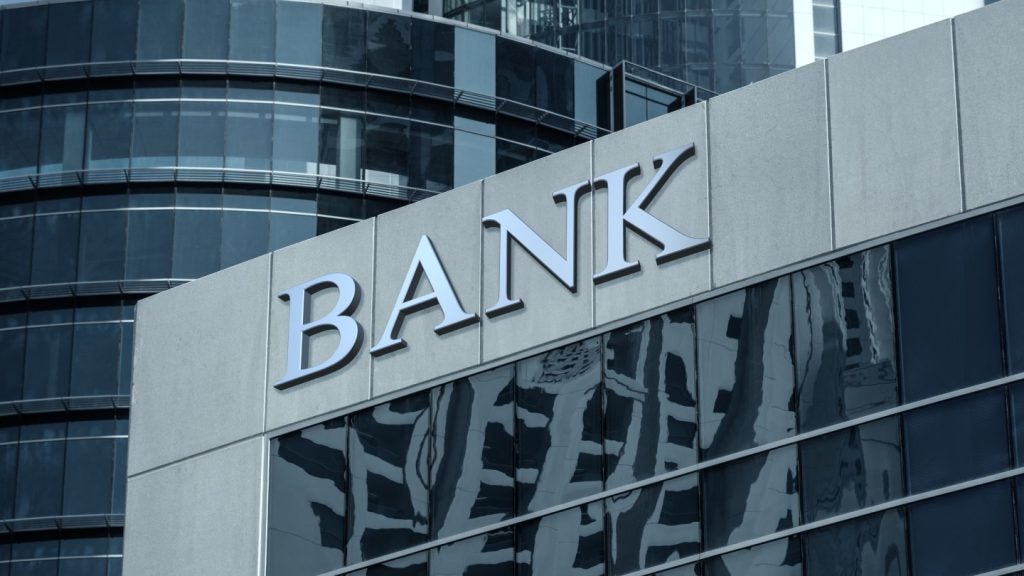Europe’s leading banking groups have
reported a mixed set of results, though the part-nationalised banks
in the UK have continued to show real balance sheet weakness in the
wake of the financial crisis. Banks on the continent, in contrast,
particularly in Spain and France, are pushing for growth.
Dan Jones
reports.
RBI’s analysis of the interim results at 25 leading
European institutions shows an industry that is once again widely
divergent in performance but united by a tone of cautious optimism
– optimistic due to a growing belief that the worst of the crisis
is over, but cautious given the sheer extent of the initial slump
and the risk of a ‘double-dip’ recession.
The RBI table shows it is Spain’s
Santander and BBVA which remain frontrunners in terms of pre-tax
profit, with selected other European powerhouses such as BNP
Paribas, Crédit Agricole and Barclays also posting resilient
figures.
In times of size, BNP Paribas is now the
largest bank with €2.29 trillion ($3.33 trillion) in assets, over
€400 billion more than second-largest Royal Bank of Scotland. In
terms of assets, three banks in the top 10 – BNP Paribas, Crédit
Agricole and Société Générale – are from France. BPCE, the new
French banking giant formed from the shotgun merger between Banque
Populaire and Groupe Caisse d’Epargne, has not been included in the
table – with pro forma assets of €1.14 trillion, it would
rank eighth.
The continued resilience of the two Spanish
banks is another testament to their relatively prudent business
strategies as well as a cautious national regulator. In 2008,
Santander and BBVA were fêted for their retail-centric business
models at a time when investment banking divisions were under
pressure; Santander and BBVA’s performance thus far in 2009 is
arguably even more impressive given the way that retail banking
divisions have felt the brunt of the economic crisis this year.

How well do you really know your competitors?
Access the most comprehensive Company Profiles on the market, powered by GlobalData. Save hours of research. Gain competitive edge.

Thank you!
Your download email will arrive shortly
Not ready to buy yet? Download a free sample
We are confident about the unique quality of our Company Profiles. However, we want you to make the most beneficial decision for your business, so we offer a free sample that you can download by submitting the below form
By GlobalDataSantander reported a pre-tax profit of €7.3
billion, up 17 percent due to gains on acquisitions (profit without
capital gains amounted to €5.9 billion, down 5.3 percent), and BBVA
a pre-tax profit of €4 billion, down 11 percent.
All the more remarkable
The figures are all the more
remarkable given the condition of the economy in Spain, the pair’s
domestic market. With its highly leveraged property market and a
boom in demand fuelled by an increase in domestic credit, Spain’s
predicament is a microcosm of the problems experienced by Western
economies over the past 18 months.
But both Santander and BBVA have made a virtue
of their diversification within their retail banking remit, as
Santander chairman Emilio Botin said at the bank’s annual general
meeting in June: “To work with a strong local presence in 9 or 10
main markets avoids concentration in a particular geographic area
or business line that could be severely affected by a crisis or
economic disruption.”
Santander’s retail pre-tax profit was the only
such metric in the RBI table not to decrease, albeit by
virtue of capital gains on the bank’s recent acquisitions. And at
66 percent of profit, retail banking was Santander’s biggest
business contributor in the first half of 2009.
The performance of the Spanish banks has now
convinced some analysts that the retail-centric business mix has
safely navigated all aspects of the crisis.

“[Following these strong results] we have
greater visibility that Santander and BBVA’s earnings correction
will be smaller than we anticipated,” said JPMorgan analysts on 24
August, upgrading both banks to overweight from neutral in the
process.
“It is reassuring to see definite signs of
stabilisation in [non-performing loans] – net new NPL flow slowed
from €3 billion in Q408 to €2.1 billion in Q209 due to higher
recoveries as well as lower gross NPL entry,” echoed Patrick Lee
and Mark Roberts at Société Générale following the publication of
BBVA’s interim figures.
A less clear picture in the
UK
In economies such as the UK and
Germany, however, the picture is less clear.
At the part-nationalised UK banks,
Lloyds Banking Group and Royal Bank of Scotland (RBS), continued
spikes in impairments saw the former record a €4.66 billion loss
versus a €3.17 billion profit a year previous and the latter post a
slender €17 million profit, albeit against a 2008 loss of €829
million.
In RBS’s core retail markets – the UK, the US
(via its Citizens subsidiary) and the Republic of Ireland (through
Ulster bank) – the bank’s retail divisions recorded a collective €7
million loss, down from a €1.12 billion profit for the first six
months of 2008.
At Lloyds, a 2008 interim retail profit of €2
billion fell to €429 million for the six months to 30 June, but
group finance director Tim Tookey expressed a notably dissenting
view.
Tookey said retail banking impairments would
see “a moderate increase” in the second half of 2009, adding that
“at the group level we believe the overall impairment charge has
now peaked [and] we believe, given our current economic outlook,
that the charge in the second half of 2009 will be significantly
lower than the charge in the first half of 2009”.
That contrasted with a more downbeat RBS, with
chief executive Stephen Hester cautioning “there is every sign that
our financial performance over the next two years, at a group
level, will be poor due to the severe economic downturn in 2008 and
2009 and consequent impact on impairments and funding costs”.
A UK sector report from accountancy firm KPMG released on 19
August was more in line with the RBS viewpoint as opposed to
Lloyds’, advising that “it is expected that the level of unsecured
impairments will not peak until 2010 or beyond”.
KPMG’s UK Banks Performance Benchmarking
Survey also forecast that retail banking units in the UK “will
fall into loss making in the second half of this year”. The report
also cited mortgage provisions, given the low visibility
surrounding UK unemployment and interest rates in 2010, as “a key
uncertainty for retail banks for the foreseeable future”.
Similar uncertainty exists over the future
profitability of Commerzbank, Germany’s second-largest bank by
market capitalisation. The bank has already announced it does not
expect to return to the black until 2012, and its current
performance continues to head in the wrong direction.
Commerzbank slid from a 2008 interim pre-tax
profit of €894 million to a loss of €1.37 billion for the first six
months of 2009, with its private clients division in Germany making
a pre-tax profit of just €4 million against a €270 million profit
in 2008.
The bank’s exposure to Central and Eastern
Europe (CEE) continued to prove problematic, with provisions for
the region having to be “massively increased”. Loan loss provisions
for the segment rose from €43 million in the first six months of
2008 to some €375 million for the equivalent period in 2009;
consequently the unit recorded a pre-tax loss of €141 million, down
from a €222 million profit in the first half of 2008.
Commerzbank did, however, say it believed “the
economic crisis will reach its peak in Central and Eastern Europe
in 2009”.
Italy’s UniCredit is another bank which has
been making more encouraging noises about the CEE region in recent
weeks, having suggested provisions for the region may have peaked.
The bank posted net write-down on loans and provisions of €713
million in the first half of the year, up from an equivalent figure
of €199 million for the first half of 2008.
Pressure on Scandinavian
banks
The Baltic region, where an economic
depression remains in full swing in key economies, continues to put
pressure on Scandinavian banks’ reserves, however. For the two
Scandinavian institutions included in RBI’s table – Nordea
and Danske – their relatively low level of exposure to Latvia,
Lithuania and Estonia has mitigated the impact upon their balance
sheets.
But for others, such as SEB and Swedbank, the
problem is more severe. In a move contrary to CEO Michael Wolf’s
assertions that the bank was well capitalised following the
publication of its interim figures, Swedbank announced on 17 August
that it was raising SEK15 billion ($2 billion). Wolf said a
better-than-expected economic performance in Estonia had
nonetheless offset the worse-than-expected fortunes of Latvia and
Lithuania.
The Swedish banks as a whole have, like those
in Spain, benefitted from strong regulation, according to a series
of stress tests performed on leading European institutions by
analysts at equity research house AlphaValue.
The banks have benefited from “a reactive
Swedish Central Bank that imposed regulatory capital increases
early on in the crisis, [learning] from the failure of its banking
system in the early 1990s”, said AlphaValue bank analyst Christophe
Nijdam.
Nijdam, speaking to RBI, noted that
although the economic deterioration was widespread across Europe,
taking in the likes of the UK, Spain, Scandinavia, Italy and
Germany, banks that passed the stress test included Spain’s
Santander and BBVA, Italy’s Mediobanca, Germany’s Deutsche Bank and
the leading banks in Sweden.
Conversely, while France was one of the least
effected countries in terms of credit risk – a key metric for the
AlphaValue tests – its banks do have a number of problems to face
up to. Nijdam described BNP Paribas’s efforts to consolidate Fortis
as a “real challenge” and noted that the information received by
the market on the deal was relatively scarce.
“My opinion is that Fortis is not in as good a
condition as BNP Paribas had expected last October,” said Nijdam.
“Of course, the economic environment has profoundly changed since
then, but it remains an issue.”
Consensus-beating results
The ongoing travails of French
investment bank Natixis are also likely to have an impact on the
newly formed group BPCE, according to Nijdam.
“If push comes to shove and the worst-case
scenario for loan losses is realised, BPCE will not be strong
enough to secure the losses without government help,” he said.
Other French institutions have been more
resilient: Crédit Agricole saw its interim retail pre-tax profit
fall by 36 percent to €872 million, but its headline pre-tax figure
held up well at €2.18 billion, down 12 percent on the 2008
figure.
Analysts at Société Générale said the
consensus-beating results indicated “the outlook for retail banking
appears to have brightened, with better-than-anticipated lending
margins, particularly favourable for the Caisse Régionales”.
“Crédit Agricole has fully integrated the
lessons learnt from the crisis and has adapted its business model
to meet the needs of the real economy,” said Georges Pauget, CEO of
Crédit Agricole, in a statement accompanying the bank’s
results.
“Retail banking, insurance, asset management
and consumer finance delivered very good performances, despite the
adverse economic climate.”
Yet despite the increasing optimism among many
of Europe’s leading institutions, a full-scale recovery still seems
a long way off – not least because the cycle of credit growth
remains very much in a downward phase, as figures released by the
European Central Bank (ECB) on 27 August showed.
The data showed that bank credit to households
and businesses shrank again in July, with the year-on-year
expansion of 0.6 percent well below the consensus of a 1.3 percent
increase.
With such inconsistencies continuing to
puncture any narrative of economic recovery, it is unsurprising
that even the most resilient banks are hedging their bets
somewhat.
In the words of Stephen Green, chairman of
HSBC – still one of the strongest performing banks in Europe
despite a 51 percent fall in pre-tax profit to €3.53 billion – “the
timing, shape and scale of any recovery in the wider economy
remains highly uncertain”.
Green added: “Our view continues to be cautious as long as a
number of serious impediments to growth remain.”
| RESULTS | |||||||||
| Europe – interim 2009 results from 25 selected banking groups, ranked by total group assets |
|||||||||
| Group pre-tax profit (€bn) | Retail banking profit (€bn)(1) |
Total assets (€bn) | Total deposits (€bn) | Cost-income ratio % | |||||
| 2009 | % change y-o-y | 2009 | % change y-o-y | 2009 | % change y-o-y | 2009 | % change y-o-y | ||
| BNP Paribas | 4.46 | -6.1 | 1.77 | -28 | 2,290 | 26 | 606.3 | 69 | n/d |
| Royal Bank of Scotland(2) | 0.02 | n/m | -0.007 | n/m | 1,880 | -5 | 561.2 | -8 | 59 |
| Barclays(3) | 3.47 | 8 | 0.4 | -60 | 1,770 | 13 | 364.9 | 0 | 54 |
| Deutsche Bank | 3.13 | 703 | 0.26 | -59 | 1,730 | -21 | 368.5 | -13 | 69.3 |
| HSBC | 3.53 | -51 | -0.88 | n/m | 1,680 | -5 | 806.4 | 0 | 47.9 |
| Crédit Agricole(4) | 2.18 | -12 | 0.87 | -36 | 1,610 | 10 | 472.5 | 19 | 55.5 |
| Lloyds Banking Group | -4.66 | n/m | 0.43 | -78 | 1,220 | 190 | 491 | 165 | 50.9 |
| ING | -1.02 | n/m | 0.43 | -72 | 1,190 | -13 | 461.8 | -14 | n/d |
| Santander | 7.33 | 17 | 4.85 | 0 | 1,140 | 18 | 469.3 | 34 | 47.9 |
| Société Générale | 0.31 | -87 | 1.3 | -43 | 1,060 | -2 | 291.5 | 5 | 71.9 |
| UniCredit(5) | 1.92 | -57 | 1.61 | -48 | 982.7 | -7 | 590.7 | -8 | 53.7 |
| Commerzbank(6) | -1.37 | n/m | 0.004 | -99 | 911.8 | 48 | 296.6 | 80 | 80.6 |
| Intesa Sanpaolo | 2.2 | -48 | 1.58 | -43 | 638.4 | 2 | 416.5 | -1 | 52.5 |
| Rabobank(7) | 1.32 | -18 | 0.99 | -8 | 615.4 | 8 | 284.9 | 3 | 59.1 |
| BBVA | 4 | -11 | n/d | n/m | 542.6 | 8 | 249.1 | 7 | 39.4 |
| Nordea | 1.65 | -7 | n/d | n/m | 475.6 | 10 | 149.7 | 2 | 47 |
| Danske Bank(8) | 0.32 | -69 | 0.6 | -29 | 435.2 | -7 | 105.1 | -10 | 47.7 |
| KBC | -3.5 | n/m | n/d | n/m | 344.4 | -9 | 194.1 | -11 | n/d |
| la Caixa | 1.26 | 4 | 0.75 | -9 | 268.5 | 2 | 138.5 | 9 | n/d |
| Deutsche Postbank | -0.16 | n/m | 0.31 | -42 | 237.2 | 4 | 135.7 | 20 | 92.5 |
| DnB NOR | 0.66 | 0 | -0.81 | n/m | 211.6 | 15 | 71.3 | 8 | 48.6 |
| Erste Bank | 0.77 | -18 | 0.54 | -34 | 204.2 | -5 | 113.5 | 4 | 52.5 |
| Raiffeisen International | 0.46 | -47 | n/d | n/m | 155.9 | -2 | 55.7 | -10 | 49.4 |
| Sberbank | 0.16 | -92 | n/d | n/m | 145.3 | 17 | 109.9 | 11 | 33.8 |
| National Bank of Greece(9) | 0.95 | -4 | 0.32 | -59 | 110.5 | 18 | 70.62 | 11 | n/d |
| Figures converted into euros. n/m=not meaningful. n/d=not disclosed. (1) refers to subsidiaries either wholly or primarily focused on consumer banking and may be an estimate figure derived by RBI; (2) retail figure is UK, US and Ulster Bank only; (3) retail figure includes commercial banking but not Barclaycard; (4) cost-income figure is for French retail banks only; (5) retail figure includes CEE and Poland’s Markets divisions retail; (6) retail figure does not include CEE operations; (7) retail figure includes international wholesale; (8) retail includes corporate banking; (9) retail figures include international commercial banking. Source: RBI |
|||||||||
|
BRANCHES |
|||
|
Europe – selected banks ranked by |
|||
|
Bank |
Customers per branch |
Retail profit/loss per branch (€ |
Deposits per branch |
|
HSBC |
11,760 |
-103.5 |
94.9 |
|
Commerzbank |
11,670 |
3.3 |
246.7 |
|
Barclays |
10,980 |
97.6 |
89 |
|
Lloyds Banking Group |
10,000 |
143.3 |
163.7 |
|
Royal Bank of Scotland |
9,000 |
-1.8 |
140.3 |
|
DnB NOR |
8,570 |
-2,314 |
387.7 |
|
ING |
7,570 |
116.2 |
124.8 |
|
Nordea |
7,150 |
n/d |
106.9 |
|
Santander |
6,430 |
346.4 |
33.5 |
|
BBVA |
6,400 |
n/d |
33.2 |
|
Danske Bank |
6,250 |
750 |
131.4 |
|
Note: all figures are rounded. n/d=not |
|||
|
DISTRIBUTION |
||
|
Metrics for 25 selected European |
||
|
Bank |
Branches |
Nos of retail banking customers |
|
Sberbank(1) |
19,492 |
45E |
|
Santander |
14,108 |
90 |
|
Crédit Agricole |
11,850 |
55 |
|
UniCredit |
9,974 |
26 |
|
HSBC |
8,500 |
100 |
|
Intesa Sanpaolo |
8,119 |
19 |
|
BBVA |
7,458 |
48 |
|
Société Générale |
6,500E |
24 |
|
BNP Paribas |
6,000 |
20 |
|
la Caixa |
5,365 |
10 |
|
Barclays |
4,126 |
45 |
|
Royal Bank of Scotland |
4,000 |
36 |
|
ING |
3,700E |
28 |
|
Raiffeisen International |
3,188 |
15 |
|
Lloyds Banking Group |
3,100 |
30 |
|
KBC |
2,290 |
12 |
|
Erste Bank |
2,214 |
17 |
|
Deutsche Bank |
1,992 |
n/d |
|
National Bank of Greece |
1,813 |
10 |
|
Rabobank |
1,600 |
9.5 |
|
Nordea |
1,400 |
10 |
|
Commerzbank |
1,200 |
14 |
|
Deutsche Postbank(2) |
850 |
14 |
|
Danske Bank |
786 |
5 |
|
DnB NOR |
360 |
3.1 |
|
E=estimate. n/d=not disclosed. (1) includes |
||







